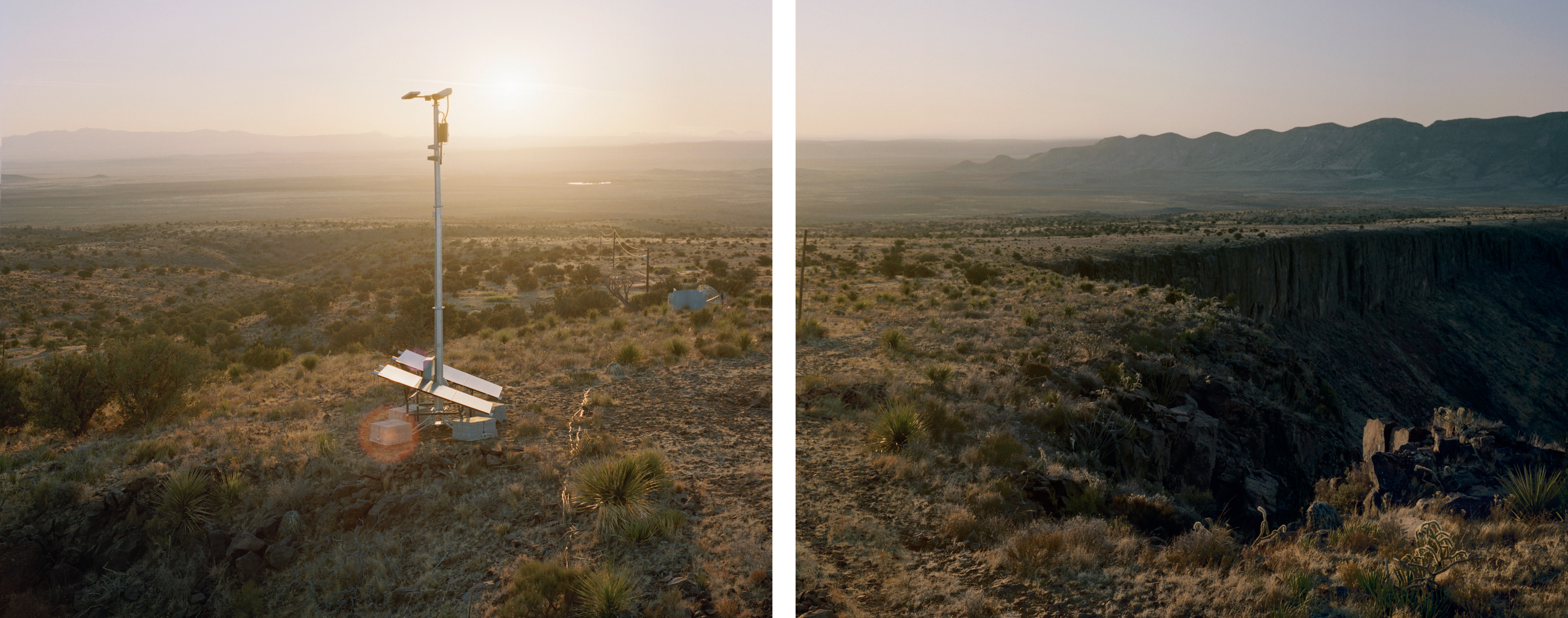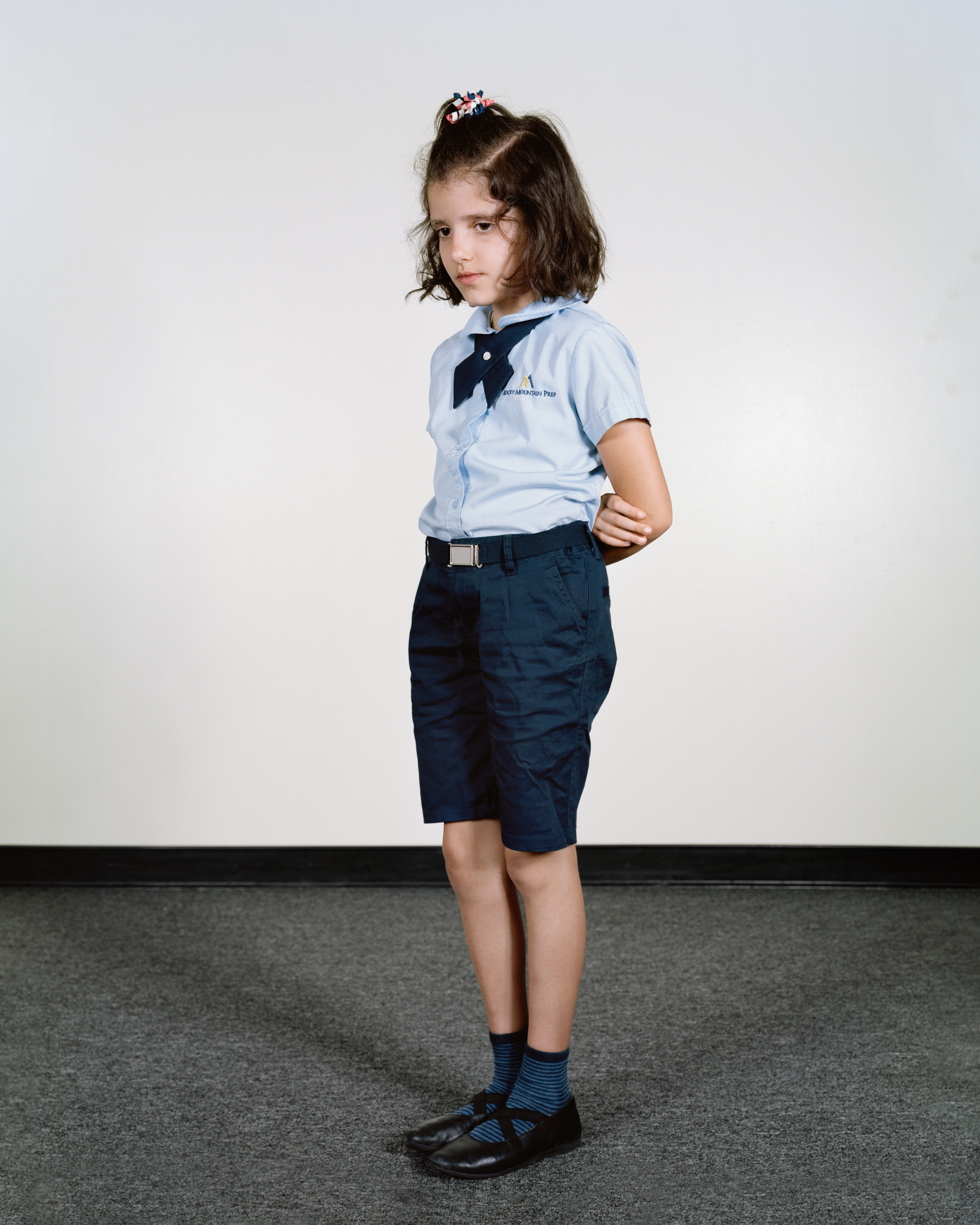Photographer Benjamin Rasmussen grew up in the Philippines with an American mother and a Faroese father, before settling in America and taking American citizenship. His new book, The Good Citizen, published by GOST, is the result of more than a decade’s exploration of American citizenship and its violent, exclusionary history.
It was created in collaboration with Frank Wu, a legal scholar and historian who both reacted to and guided Rasmussen’s work, conducted across 43 states.
Videos by VICE
Wu’s texts run through the book’s five chapters – Violence, Exclusion, Archetype, Beauty and Whiteness and Surveillance – layering historical and legal context on top of new and archival images. The book covers a dizzying breadth of subjects, including America’s contemporary Yazidi and Somali communities, Japanese American internment, border surveillance, lynchings, beauty pageants, police violence and the 1864 massacre of Native Arapaho peoples. We spoke with Rasmussen about citizenship in the American context and whether – after ten years diving into the nation’s harrowing civic history – he’s hopeful about the path ahead.

VICE: What were the events – either in your own life or in the news – that kicked this project off?
Benjamin Rasmussen: I spent most of my twenties being interested in issues involving refugees and IDPs [internally displaced person]. An editor at one point posed the question: “When does someone go from being a migrant or refugee to being a citizen?” I realised that I’d never asked that question of my own experience, or of the American context. Not growing up in America, I’d never studied its history or civics. I started trying to understand how citizenship functions in America.
The book opens with the case of Dred Scott, an enslaved man who sued for his freedom. The thing that really interested me was that the Supreme said as a Black man he couldn’t become a citizen, so had no standing to sue. Right as I was researching that, Michael Brown was killed in Ferguson, Missouri, by a police officer. People were pouring out onto the streets in Ferguson, and specifically onto West Florissant Avenue. Five miles south of West Florissant Avenue is where Dred Scott is buried.

It clicked: The idea that American history is so short. There are these direct physical connections between the past and the present. The media narrative around Ferguson was “rioting and buildings being burned” – I just had no interest in photographing that. To me, it wasn’t helpful in terms of understanding why these things were happening. I was more interested in, what led to the creation of this community that is now being rocked by these events?
That led to years of research and working out how to follow history into the present, how to look backward while photographing the ripple effects of American history on life and policy today.

It must have been a challenging project to take on as a newly confirmed American.
The American side of my family has a relatively dark history and past and, for me, thinking of the work in terms of that helped. It’s almost like in order to be completely present in the good, you have to acknowledge the painful and destructive. I wanted to do that in a way that didn’t completely lose itself in that trauma of the past, but the reality is that those traumas have shaped so many people’s experiences of America.
Can you talk a bit about the importance of the chapter “Whiteness and Beauty”? How central is that concept of white beauty to the book’s wider premise?
One of the very first laws that was passed in the US was the Naturalisation Act of 1790, which limited naturalisation to free, white persons. That slightly shifted with the 13th and 14th Amendments, but up until the 1950s that law still existed.
In popular culture people often make very vague references to white supremacy and whiteness being key to the de facto structures of America. But it’s not the de facto structure of America, it’s the de jure structure. It’s built into the laws and statutes. These are very clearly defined, legal absolutes.
Within that context I became very interested in how legal language functioned and the “prerequisite cases”, which started in the late 1870s and continued through to the 1950s. They were cases where people who had emigrated from other countries had applied for naturalisation and been denied because the court said they weren’t white. So, not being citizens so they couldn’t sue to change the law… They had to sue to be considered white.

All of a sudden the courts were having to decide what whiteness was. This was happening alongside shifts within the fields of science and anthropology, where people are realising that race is a social construct not a biological absolute. All of that’s complex and – in a lot of ways – boring information for people to deal with, but it’s so key to understanding how citizenship was built and functions and how whiteness is core to this complex toxic soup of the exclusionary aspects of American identity.
So how do you talk about these things in a way you don’t lose everyone? I came across these beauty contests that were held in immigrant communities. They were a celebration of origin and American identity, simultaneously. I photographed in communities where people had sued for whiteness, but also within white immigrant communities from Eastern Europe and at contests within the African diaspora. It was a way to engage with this really complex history of legality, in a visual way that was celebratory of the contemporary communities.

The “Surveillance” chapter dwells on America’s southern border, can you explain how this border speaks to American ideas of citizenship and identity?
I was working on a story about Anduril, the company making these automated watchtowers being used on the US-Mexico border. I began with photographing the watchtowers and it became a starting point for looking at American border policy. How do you quantify the gaze of the state, how do you photograph how a border functions?
I started looking at the policy of “prevention through deterrence”: basically, the idea of making it very difficult to cross the border at safe places, therefore funnelling migrants into the dangerous places. It’s based on the simplistic idea that people then won’t come… Jason De León, an anthropologist who works on desert border crossings, refers to this as the state handing the violence done to the human body over to nature.
There’s this interesting dichotomy: on the one hand we have this handing over of state violence to nature then on the other hand we have this handing over of the actual recognition of peoples’ humanity and intent to an AI algorithm operating within cameras…

Even though a lot of this work was made within a Trump-ian America, most of these things function across parties and administrations. Prevention through deterrence started under Clinton and continued under every administration since. Throughout the book I have tried to avoid saying, “Oh it’s these guys, they are the assholes!” It’s not that easy.

Do you feel the book’s a celebration of people’s ability to overcome these structures or a condemnation of the idea of citizenship?
I needed to acknowledge the complexity and the multiple faces of the good and the bad and the ugly of existing within [America]. At its darkest, when I was interacting with the most painful aspects of American history, it felt more like a condemnation, but there are other portions of the book’s creation which felt more like a celebration.
The book ends with portraits of students, along with their quotes about how they use languages in terms of their home life, their school life, their dream life. To me, the hopefulness of the book lies within the idea of society becoming more complex.
The structures of America were built around something that needs to be remembered and condemned, but in spite of that there are ways that American society can – and does – function that I think can be really beautiful. But unless we remind ourselves that it’s been exclusionary and how that’s so baked into the power structure, I do feel American society has a tendency to slip backwards.





